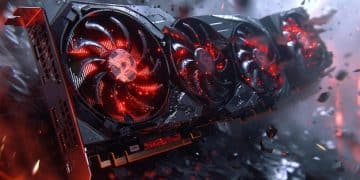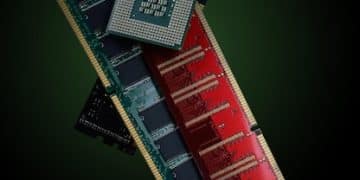NVIDIA GPU Memory: VRAM Capacity & Gaming Performance Explained
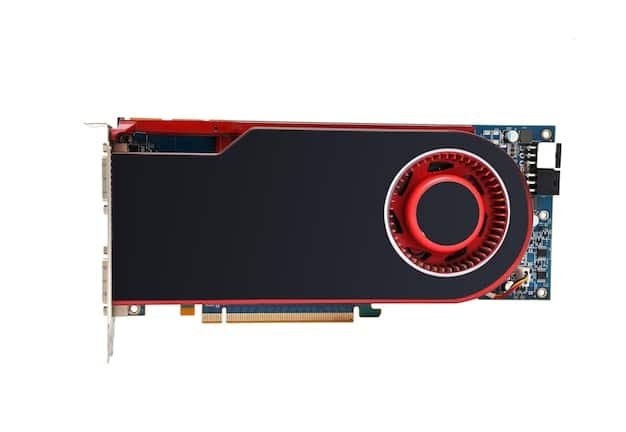
NVIDIA’s GPU memory, or VRAM, is crucial for gaming performance, determining the level of detail, resolution, and smoothness that can be achieved in modern games.
Understanding **NVIDIA’s GPU Memory: VRAM Capacity and Its Impact on Gaming Performance** is essential for gamers and developers alike. This article delves into the intricacies of VRAM, exploring its function, capacity, and the impact it has on your gaming experience.
What is GPU Memory (VRAM)?
GPU memory, often referred to as VRAM (Video Random Access Memory), is a dedicated type of memory specifically designed for graphics processing. It functions differently than system RAM, serving as the primary storage for textures, frame buffers, and other graphical data that the GPU needs to quickly access.
Think of VRAM as the GPU’s short-term memory. The larger and faster your VRAM, the better your GPU can handle complex scenes and high-resolution textures.
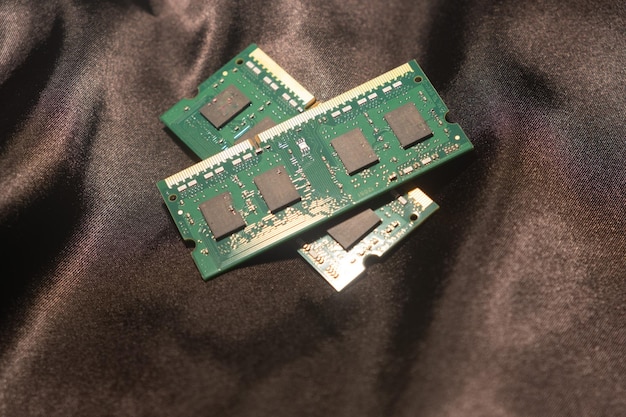
VRAM vs. System RAM: Key Differences
While both VRAM and system RAM are types of memory, they serve different purposes and have distinct characteristics.
- Purpose: VRAM is dedicated exclusively to graphics processing, whereas system RAM handles a broader range of tasks for the entire system.
- Access Speed: VRAM is typically faster and has higher bandwidth than system RAM, enabling quicker access to graphical data.
- Location: VRAM is located directly on the graphics card, close to the GPU, while system RAM is located on the motherboard, accessible by the CPU and other system components.
In summary, VRAM is crucial for the GPU to efficiently render graphics, while system RAM supports overall system performance.
VRAM is a specialized component within a GPU, crucial for handling textures, frame buffers, and other graphics-intensive data. Its speed and capacity directly impact gaming performance by minimizing bottlenecks in data processing.
VRAM Capacity: How Much Do You Need?
The amount of VRAM your GPU needs depends largely on the games you play, the resolution you play at, and the graphical settings you use. Here’s a breakdown of VRAM requirements based on different gaming scenarios.
Having sufficient VRAM ensures that your GPU can handle all the necessary data without needing to constantly swap data with system RAM, which can cause performance issues.
VRAM Requirements by Resolution and Settings
Different resolutions and graphical settings demand varying amounts of VRAM.
- 1080p (Full HD): Generally, 4GB to 6GB of VRAM is sufficient for most games at medium to high settings.
- 1440p (QHD): For 1440p gaming, 8GB of VRAM is recommended to handle higher resolution textures and more complex scenes.
- 4K (Ultra HD): 4K gaming often requires 10GB or more of VRAM, especially when using ultra settings and high-resolution texture packs.
These are general guidelines, and some games are more VRAM-intensive than others. Always check the recommended specifications for the games you intend to play.
Choosing the right VRAM capacity is essential for a smooth gaming experience. Insufficient VRAM can lead to stuttering, frame rate drops, and reduced visual quality, especially at higher resolutions and settings.
Factors Affecting VRAM Usage
Several factors can influence how much VRAM your games consume. Understanding these factors can help you optimize your settings and choose the right graphics card.
By knowing what affects VRAM usage, you can make informed decisions about your game settings and ensure a balanced performance.
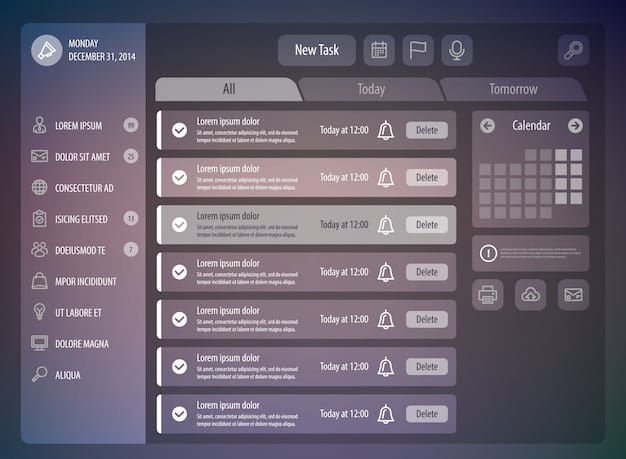
Key Settings That Impact VRAM
Adjusting certain settings can significantly reduce or increase VRAM usage.
- Texture Quality: Higher texture quality requires more VRAM to store detailed textures.
- Shadow Detail: High shadow settings can dramatically increase VRAM usage due to the complexity of rendering shadows.
- Anti-Aliasing: While anti-aliasing improves image quality, it also increases the VRAM load by smoothing out jagged edges.
- Resolution: Higher resolutions inherently require more VRAM to render the increased number of pixels.
Experimenting with these settings can help you find a balance between visual quality and performance.
Understanding how different settings impact VRAM usage allows you to fine-tune your gaming experience. Lowering texture quality, shadow detail, or anti-aliasing can free up VRAM and improve performance, particularly on GPUs with limited memory.
The Impact of Insufficient VRAM
When your GPU runs out of VRAM, it has to rely on system RAM, which is slower. This can lead to several performance issues that negatively affect your gaming experience.
Recognizing the symptoms of VRAM limitations can help you diagnose performance issues and take corrective actions to improve your gameplay.
Common Issues Caused by VRAM Limitations
Running out of VRAM can manifest in various ways.
- Stuttering: Frequent pauses or hitches in the game, as the GPU struggles to load and process data.
- Frame Rate Drops: Noticeable decreases in the number of frames rendered per second, resulting in a choppy experience.
- Texture Pop-In: Textures loading slowly or appearing blurry before snapping into focus.
- Game Crashes: In severe cases, the game may crash due to memory errors.
These issues can be frustrating and make games unplayable. Optimizing your settings or upgrading your GPU may be necessary to resolve them.
Insufficient VRAM can severely compromise gaming performance, leading to stuttering, frame rate drops, and texture pop-in. Addressing these issues through settings adjustments or hardware upgrades can significantly enhance your gaming experience.
Future-Proofing Your VRAM: What to Consider
As games become more graphically demanding, planning for the future is essential. Consider the following when selecting a GPU to ensure it remains capable for years to come.
Thinking ahead about VRAM requirements can save you from needing to upgrade too soon and ensure a sustained, enjoyable gaming experience.
Tips for Future-Proofing Your GPU
Consider these factors when choosing a GPU.
- Emerging Technologies: Ray tracing and other advanced rendering techniques demand more VRAM.
- Game Development Trends: Games are becoming increasingly complex with higher resolution textures and detailed environments.
- Higher Resolutions: If you plan to upgrade to a 4K monitor, ensure your GPU has sufficient VRAM to handle the increased resolution.
By considering these factors, you can select a GPU that meets your current needs and remains viable for future gaming endeavors.
Future-proofing your VRAM involves considering emerging technologies, game development trends, and your resolution goals. Investing in a GPU with ample VRAM can ensure that you’re prepared for the graphical demands of future games.
Optimizing VRAM Usage for Better Performance
Even if you have a capable GPU, optimizing your settings can help you get the most out of your VRAM and improve overall performance.
Efficiently managing VRAM usage can lead to smoother gameplay and better visual quality, even on older hardware.
Practical Tips for VRAM Optimization
Here are some actionable steps you can take to optimize VRAM usage.
- Adjust Texture Quality: Lowering texture quality can significantly reduce VRAM usage without drastically impacting visual fidelity.
- Disable Unnecessary Effects: Turn off or reduce settings like motion blur, depth of field, and ambient occlusion.
- Update Drivers: Ensure you have the latest drivers for your GPU, as they often include performance improvements and optimizations.
By implementing these tips, you can improve performance and enjoy smoother gameplay.
Optimizing VRAM usage involves adjusting texture quality, disabling unnecessary effects, and keeping your drivers updated. These steps can help improve performance and ensure a smoother gaming experience, even on GPUs with limited VRAM.
| Key Point | Brief Description |
|---|---|
| 🎮 VRAM Importance | Crucial for handling textures and graphical data, impacting gaming performance directly. |
| 🖼️ Resolution | Higher resolutions (like 4K) demand more VRAM, affecting visual quality and smoothness. |
| ⚙️ Optimizations | Adjusting settings like texture quality and shadow detail can reduce VRAM usage. |
| 📈 Future-Proofing | Consider future game demands and emerging technologies when selecting a GPU for long-term use. |
Frequently Asked Questions (FAQ)
▼
VRAM, or Video Random Access Memory, is dedicated memory on your GPU. It’s crucial for storing textures, frame buffers, and other graphical data, significantly impacting gaming performance and visual quality.
▼
For 1080p gaming, 4GB to 6GB of VRAM is generally sufficient for most games at medium to high settings. However, some newer titles may benefit from 8GB for smoother performance.
▼
Running out of VRAM can cause stuttering, frame rate drops, texture pop-in, and potentially game crashes. The GPU has to rely on slower system RAM, leading to performance bottlenecks.
▼
No, VRAM is integrated into the graphics card itself and cannot be upgraded separately. If you need more VRAM, you’ll need to replace the entire graphics card with a newer model.
▼
You can check your graphics card’s VRAM in Windows by going to Settings > Display > Advanced display settings > Display adapter properties. The “Dedicated video memory” value indicates the amount of VRAM.
Conclusion
Understanding NVIDIA’s GPU memory and its impact on gaming performance is crucial for both gamers and developers. By considering VRAM capacity, optimizing settings, and planning for future gaming demands, you can ensure a smooth and enjoyable gaming experience. Knowing how VRAM works empowers you to make informed decisions about your hardware and settings.

